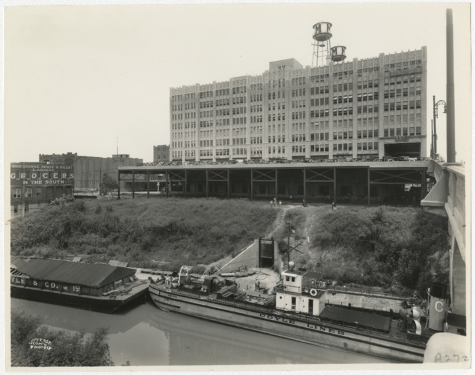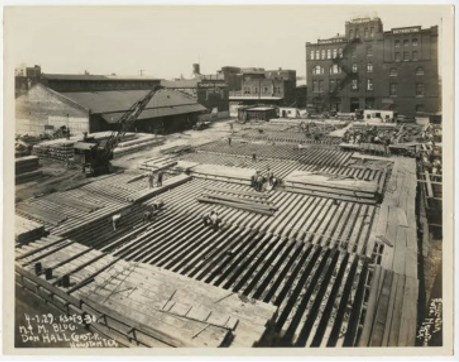 As the UHD footprint continues to expand, it's hard to believe that at one time, the
entire campus was centered on only one building: One Main. The site of that building,
indeed all UHD, is just steps away from Allen's Landing on Buffalo Bayou where Houston
was founded in 1836. Right at the edge of Houston's central business district, UHD
shares in the earliest history of the city center.
As the UHD footprint continues to expand, it's hard to believe that at one time, the
entire campus was centered on only one building: One Main. The site of that building,
indeed all UHD, is just steps away from Allen's Landing on Buffalo Bayou where Houston
was founded in 1836. Right at the edge of Houston's central business district, UHD
shares in the earliest history of the city center.
Where One Main Building now stands, there was once a brewery and cotton warehouses. By the 1920s, the tremendous growth in commercial activity through the ship channel and railroads led to the expansion of downtown Houston. The need for a new center to connect merchants and transportation all in one single location resulted in the creation of the Merchants and Manufactures Building, also known as the M & M Building.
With 40,000 panes of glass and 600,000 square feet, the building was designed around a mall for merchant exhibits and included clubs, lounges, and restaurants. The first floor had a dock and access to two rail lines; the second floor had a parking garage; the third floor had 40 street and arcade stores. Floors four to nine were offices and suites; the tenth floor housed an industrial display for foreign and domestic goods; and the 11th floor was the administrative office.
Unfortunately, when the building opened in 1930 at a cost of more than $6 million
as the largest building in the city and the third tallest, the Great Depression was ravaging the world economy. The M&M Building
would eventually face bankruptcy, and the promise of the structure to house and transport
goods and services never saw its full potential.
third tallest, the Great Depression was ravaging the world economy. The M&M Building
would eventually face bankruptcy, and the promise of the structure to house and transport
goods and services never saw its full potential.
In 1948, businessman H.H. Coffield purchased the building and began redevelopments. During the 1950s, Houston experienced suburbanization, resulting in the decay of Houston's original town center, although many organizations rallied to promote the renewal of downtown, including the establishment of Allen's Landing as a city park. Unfortunately, revitalization of downtown and the M & M building was not successful during the 1950s and most of the 1960s.
Eventually, South Texas Junior College purchased the building in 1968 for $4 million (roughly $36 million in 2024). The University of Houston acquired the assets of South Texas Junior College in 1974, and it was renamed the University of Houston Downtown College, not becoming the University of Houston-Downtown until 1983.
Now the historic M & M Building serves a higher purpose than its original function—it is the nucleus for the education of more than 14,000 students each year.
Photo Credits
OMB (M & M Building at that time) shown when it was an industrial center. A boat and barge dock to unload goods. (Christian, G. (1986). 40,000 Window Panes: The Story of the Merchants and Manufactures Building. Office of University Relations, UH-Downtown. Citation: MSS1248-1854, Houston Public Library, Houston Research Center.).
OMB under construction circa 1929. (Merchants and Manufactures Building (1929-1930). Citation: Architectural-VF-Merchangs and Manufactures.)
